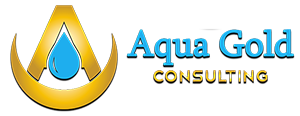The Australian economy in September 2025 is in a phase of cautious optimism, shaped by a combination of moderating inflation, evolving consumer confidence, and international trade dynamics. For businesses across sectors, these factors present both opportunities and challenges. Understanding the current state of the market and its implications can help business leaders make informed decisions, strengthen resilience, and plan strategically for the months ahead.
Inflation and Consumer Spending Trends
After two years of elevated inflation, the Reserve Bank of Australia’s monetary policies have contributed to a gradual cooling of price growth. Inflation is tracking lower than the peaks of 2022–2023 but remains above the long-term target of 2–3 percent. For businesses, this creates a mixed environment.
On one hand, moderating inflation eases pressure on operating costs, particularly for industries reliant on imported goods and raw materials. On the other hand, households are still adjusting to the cumulative effect of higher living expenses and interest rates. This has made consumers more cautious with discretionary spending, prioritising essentials such as groceries, utilities, and healthcare.
Retailers and service providers should note this shift in behaviour. Value-driven offerings, loyalty programs, and flexible payment options are becoming increasingly important in retaining and attracting customers in this climate.
Housing and Construction Sector Performance
The Australian housing market remains a defining feature of the broader economy. In September 2025, property prices have stabilised in most major cities after a period of sharp fluctuations. Rising construction costs and labour shortages continue to weigh on new housing developments, while rental markets remain tight due to sustained demand and limited supply.
For construction companies, project delays and cost overruns are still significant risks. Businesses in related industries—such as building materials suppliers, trades, and real estate services—are directly affected by these constraints. Opportunities exist in renovation and retrofitting work, as homeowners increasingly turn to upgrading existing properties instead of moving into new builds.
From a business perspective, diversifying service offerings and building strong relationships with suppliers can help manage volatility in this sector.
Labour Market and Wage Pressures
Australia’s labour market remains relatively strong in September 2025, with unemployment sitting near historically low levels. However, some industries, particularly healthcare, technology, and construction, continue to experience skill shortages.
This tight labour market contributes to ongoing wage growth, which, while beneficial for workers, adds pressure on business operating costs. Employers face a balancing act: offering competitive wages to attract and retain talent while managing overall profitability.
Businesses may need to explore automation, digital transformation, and flexible working arrangements to reduce reliance on scarce labour resources. Training and upskilling programs also remain essential, enabling organisations to build long-term resilience against workforce shortages.
Global Trade and Geopolitical Influences
Australia’s economy is closely tied to global markets, particularly through trade relationships with Asia-Pacific nations. In September 2025, commodity exports such as iron ore, coal, and liquefied natural gas continue to generate strong revenues, though fluctuations in global demand and prices remain a source of uncertainty.
Tensions in international trade and geopolitical developments can affect supply chains, currency values, and export volumes. For Australian businesses, diversification of markets and supply sources is a key strategy to mitigate risks. Small and medium-sized enterprises, in particular, can benefit from exploring new export opportunities in emerging economies while strengthening relationships with established partners.
Technology Adoption and Digital Transformation
Digital transformation continues to accelerate across Australian industries in 2025. Businesses are increasingly leveraging cloud-based platforms, artificial intelligence, and automation tools to streamline operations, enhance customer experience, and reduce costs.
For small businesses, technology offers scalable solutions to compete more effectively with larger players. For example, e-commerce platforms, integrated payment systems, and digital marketing channels allow smaller enterprises to reach wider audiences with relatively low investment.
However, with increased reliance on technology comes greater exposure to cybersecurity risks. Businesses must invest in robust data protection measures, staff training, and compliance with evolving regulations to safeguard customer trust and operational continuity.
Sustainability and Energy Transition
Sustainability has become a central consideration in business strategy. In September 2025, the Australian government continues to drive initiatives to reduce carbon emissions and promote renewable energy adoption. This has created opportunities in the renewable energy sector, energy-efficient technologies, and sustainable supply chains.
For businesses, adopting sustainable practices is no longer optional. Customers, investors, and regulators expect companies to demonstrate environmental responsibility. Simple measures, such as reducing waste, improving energy efficiency, and adopting green certifications, can strengthen brand reputation and provide long-term cost savings.
Businesses in energy-intensive sectors, such as manufacturing and transport, may also benefit from transitioning to renewable energy sources or investing in carbon offset initiatives to remain competitive and compliant.
Talk to Us about positioning Your Business in Todays Market
The Australian market in September 2025 presents a complex but manageable environment for businesses. While economic headwinds remain—such as cautious consumer spending, wage pressures, and global uncertainties—there are also significant opportunities in technology, sustainability, and strategic diversification.
For business owners and managers, the key lies in adaptability. Those who can adjust pricing strategies, embrace digital tools, and position themselves as sustainable and customer-focused will be better equipped to thrive. Careful monitoring of economic trends, combined with proactive decision-making, will ensure businesses remain competitive in this evolving landscape.
Safe1Electrical, while primarily an electrician and air conditioning maintenance company, also recognises the importance of staying informed about these broader economic forces. Whether it’s investing in energy-efficient systems for customers or managing operational costs in a shifting market, aligning services with current economic realities is essential for long-term growth.

